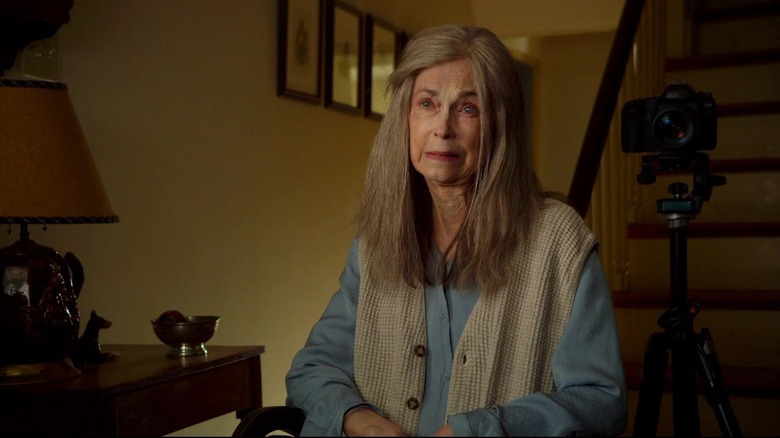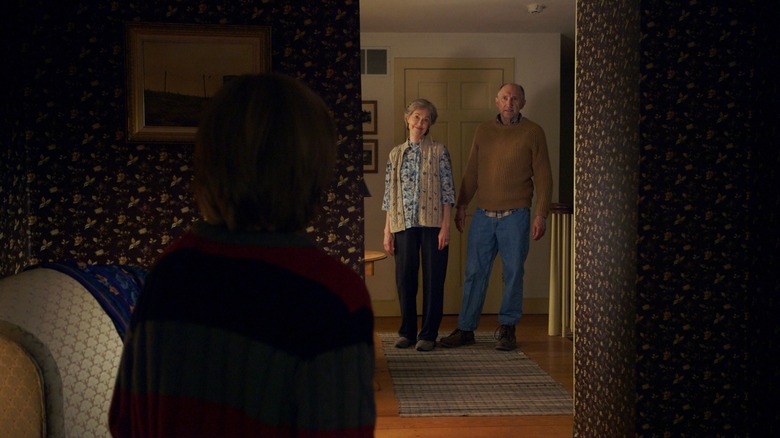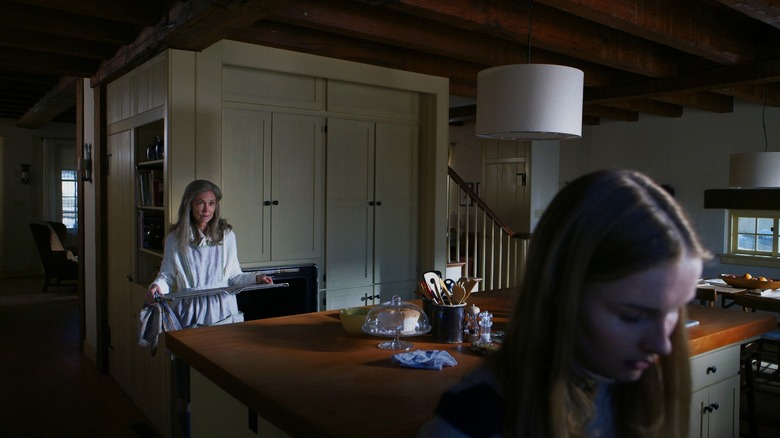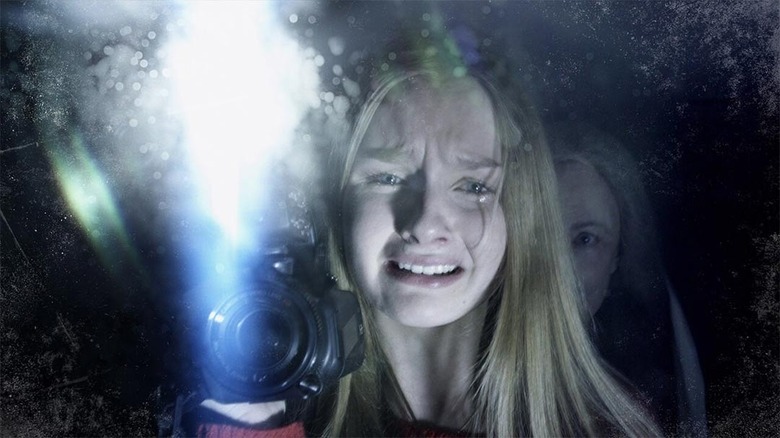Why Making The Visit Was Unlike Anything M. Night Shyamalan Had Done Before
Indian-American director M. Night Shyamalan is one of our most divisive modern auteurs. When he first stepped onto the film scene in 1999 with the twisty psychological horror "The Sixth Sense," he quickly was accepted as a new, emerging voice in Hollywood. Entering the industry at just 28 years old, Shyamalan built a career off of high critical praise and goodwill through a streak of mid-budget thrillers that would blossom into polarizing higher-budget fare. No matter your opinion of the filmmaker, never once in Shyamalan's career has he ever played it safe.
Haunted by the back-to-back box-office and critical failures of his controversial blockbuster film adaptation of the popular cartoon show, "Avatar: The Last Airbender," and his lofty sci-fi Will and Jaden Smith star vehicle, "After Earth," many mainstream studios were not willing to take the risk of working with Shyamalan and risk a poor reputation. Shyamalan had essentially found himself blacklisted from the industry.
Enter "The Visit," which would be Shyamalan's return to the big screen genre movie and would be completely self-financed on a flimsy $5 million budget, giving the director enough bargaining power for marketing and distribution with Universal Pictures because of its lower threshold of risk. In many ways, "The Visit" is considered the director's "return to form" feature, the success leading to the filmmaker's most exciting stage of his career yet,
However, a 2015 interview with Geeks of Doom, reveals that Shyamalan felt that making the found footage horror film was unlike anything he had done in his career so far.
'Limitations create opportunities'
Working with a significantly lower budget than any of M. Night Shyamalan's previous works forced the director to be as economical and grounded as possible. Whereas in previous films the director usually would have meticulously storyboarded down to every shot, there was a level of spontaneity that the found footage format demands. "I storyboard every shot of my thrillers in general, I draw them out, and do them. The difference in this one, I had to do it in a screenplay," Shyamalan explained to Geeks of Doom. "For example: he picks up the camera, he puts it on the shelf, he's carrying it in as he goes through the door, that's in the screenplay. As I was writing it, I was storyboarding, and the really wonderful part about making smaller movies is the limitations create opportunities."
Working with such a low budget also meant securing a dynamic location to serve the screenplay's needs without breaking the bank. "The Visit" is centered on two siblings traveling alone to meet their maternal grandparents who live in an eerie farmhouse. With some smart, economic location scouting, Shyamalan was lucky enough to secure a unique deal:
"I know it's going to sound like pie-in-the-sky stuff, but we can't leave the locations much when we are making a smaller budgeted movie, and I found this farmhouse – I shot it in Pennsylvania near where I live – and there was a farm that was going under foreclosure, and I ask 'Can I rent this from you for six months before you put it on firesale?' I gave them the whole spiel about 'Once I make a movie there, you can sell it for more', and all of that stuff. So they said yes."
Found footage demands a new approach
Though M. Night Shyamalan has had experience working with child actors before, "The Visit," more than any other film in his catalog so far, was fully dependent on their performances to sell the story. While the found footage format is a cheap and effective way to make a horror film, one of the limitations of the gimmick is not being able to leave the main character's perspective.
Planning ahead for "The Visit" forced Shyamalan and his actors to set earlier than usual, allowing them to rehearse as much as possible — the pre-production of "The Visit" allowed Shyamalan and cinematographer, Maryse Alberti, to make full sense of the space the kids would interact with on camera. "We had this incredible situation where I had the actual house where we were shooting through pre-production, so I would go with the actors where we would go in the rooms, on the stairs, in the kitchen, and I would say, 'Yeah, come around there,' and I would be there with the cinematographer," Shyamalan said.
Sometimes, found footage films often have a reputation for being less direction-oriented, but just like his previous films, Shyamalan was just as meticulous about what he wanted onset. Making it feel natural and authentic was the real challenge:
"There were a lot of times where I went to the house — this is really creepy actually — by myself, and just sit there, and think of the shots, and it was different because I could really plan it out, and think it through like 'this is where we want to tilt here,' 'This is where it would be off camera,' so I would take copious notes on all of it, so it's how I like to make movies, but the challenge was to make it look spontaneous."
Shyamalan forged his own path back to Hollywood
"The Visit" soon would open to a moderate critical response and a great earning of $98 million off of a $5 million budget. Though Shyamalan had certainly opened to bigger numbers in the past, this ultimately proved to the filmmaker that there was still a demand for the types of films he was passionate about. From "Split" to "Old," every film Shyamalan has produced and directed since "The Visit" has continued to be self-financed, a model that seems to be working quite well for the filmmaker; allowing him just enough creative freedom and the ability to advocate for his huge storytelling risks while promising decent returns on his pictures.
Shyamalan is a lot like cilantro — some audiences are just predisposed to not enjoy his particular abrasive style and cinematic obsessions. Love him or hate him, it's admirable to see a filmmaker fight for his creative vision and bring us films that are genuinely different from what the rest of Hollywood has to offer.
Despite all odds, M. Night Shyamalan is still finding clever and invigorating ways to continue doing what he loves best: creating.
We're excited to see what the divisive filmmaker has cooked up with "Knock at the Cabin," which arrives in theaters on February 3, 2023.



